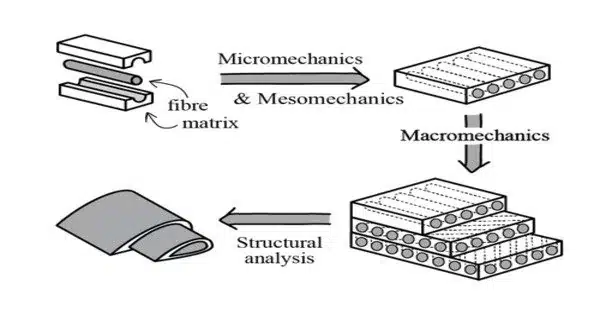Property balancing in composite materials is an important aspect of material design because it involves optimizing various material characteristics to achieve the desired performance for specific applications.
Scientists are working on a method to improve multifunctionality and structural properties at the same time by embedding patterned nanostructures in composite materials, which could lead to more efficient energy systems that improve everyday life.
Dr. Amir Asadi, an assistant professor in Texas A&M University’s Department of Engineering Technology and Industrial Distribution, is making significant advances in the field of composite materials. His research looks into embedding patterned nanostructures made of multiple materials into high-performance composites in order to achieve the desired multifunctionality while sacrificing no other properties. This could result in advances in a variety of fields, including electronics, energy storage, transportation, and consumer products.
Asadi’s work has significant implications because it addresses the challenge of simultaneously improving two properties in composite materials, which consist of at least two materials with different properties. He hopes to overcome the typical trade-off between these properties by incorporating patterned nanostructures, eliminating the need to sacrifice one to improve the other in current manufacturing methods.
“Currently, manufacturing materials with concurrently maximized functionality and structural performance is regarded as paradoxical,” he says. Increasing electrical conductivity, for example, frequently reduces strength or vice versa; increasing strength typically decreases fracture toughness.” However, Asadi is inspired by natural structures such as the elephant trunk, which has seemingly contradictory properties and functionality.
“Natural structures with properties considered incompatible in today’s engineering already exist, such as an elephant trunk that is concurrently stiff and strong, but also flexible and delicate to handle small vegetables while having communication and sensing functionalities, all arising from its muscular hydrostats architecture.”
We developed a new spray technique, referred to as supercritical-CO2 assisted atomization, which leverages the properties of supercritical CO2 and its high dissolution in water that can create several small droplets inside a suspension composed of water and nanomaterials.
Dr. Dorrin Jarrahbashi
The researchers used a novel method to control how much a material absorbs or repels water, known as the amphiphilicity degree, in a variety of nanomaterials. They created and combined specific patterns known as ring and disk patterns using these materials, which govern the final properties of composite materials.
They did this by depositing the patterns on the surface of carbon fibers using a precise spray system with carbon dioxide (CO2). They were able to control the size of the droplets, the patterns on a microscopic scale, and the interactions of the materials, resulting in the desired properties. Using a spray system, water droplets delivered nanomaterials to the surface of carbon fibers in this study.
“We developed a new spray technique, referred to as supercritical-CO2 assisted atomization, which leverages the properties of supercritical CO2 and its high dissolution in water that can create several small droplets inside a suspension composed of water and nanomaterials,” said Dr. Dorrin Jarrahbashi, co-author of the group’s journal article, “Multifunctionality Through Embedding Patterned Nanostructures in High-Performance Composites.”
“Unlike conventional approaches in which materials with desired intrinsic properties are integrated to add functionality, this research introduces the concept of integrating nanopatterns and shows that different patterns from the same material will lead to different properties in macroscale composites,” Asadi said. “If concurrent enhancement of functionality and structural properties is the goal, patterns can be combined and synergistically enhance all desired properties.”
There are various benefits of Asadi’s approach. It offers a practical, scalable, economically viable method for creating nanostructured materials and components with tunable properties. The use of diverse materials and precise control over architecture at multiple-length scales enhances the versatility and customization potential of the composites.
This pioneering work, funded by two National Science Foundation awards, has been published in Advanced Materials. Asadi acknowledges the invaluable contributions of his Ph.D. students Ozge Kaynan, Ehsan Hosseini, Farhad Zakertabrizi and Emile Motta De Castro, as well as the collaborative efforts of Dr. Lisa Perez and Jarrahbashi, in the success of this research.
As the research advances, Asadi’s work will almost certainly revolutionize the production of high-performance composites. Asadi is at the forefront of advancing the field of composite materials due to his dedication and expertise.
This study’s potential impact extends beyond the scientific community. “The research has the potential to change people’s lives,” Asadi said. “The introduced simple yet scalable technique will lower the final cost of intricate and complex devices while also broadening the manufacturing of nanostructured composites, benefiting the US economy and labor market.” This could lead to better devices, more efficient energy systems, and innovative products that improve daily life.”















